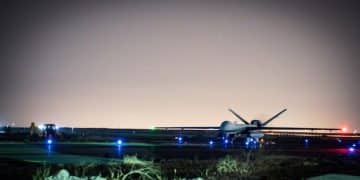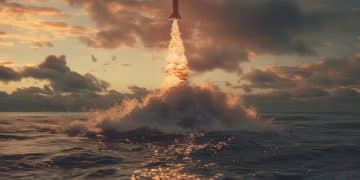US Navy’s Evolving Pacific Strategy for Naval Dominance
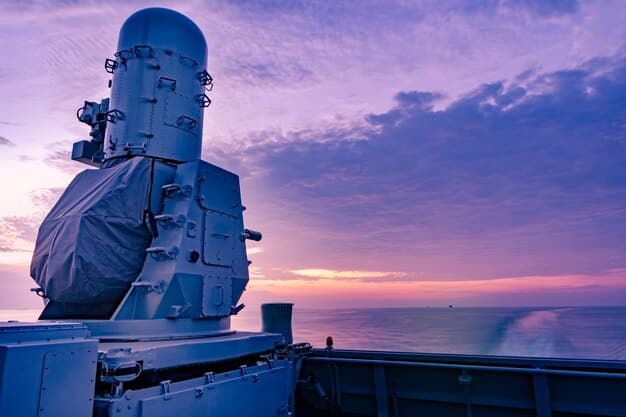
The U.S. Navy is implementing a comprehensive, multi-faceted strategy to enhance its naval warfare capabilities in the Pacific, focusing on integrated deterrence, advanced technology, and strengthened partnerships to maintain regional stability and counter emerging threats effectively in this critical geopolitical theater.
The intricate tapestry of global power dynamics is constantly being rewoven, and at its heart lies the geopolitical significance of the Pacific. Within this immense oceanic arena, the US Military’s Updated Strategy for Naval Warfare in the Pacific emerges as a pivotal development, redefining how deterrence and conflict are approached. This evolving framework isn’t just about ships and submarines; it embodies a sophisticated re-evaluation of force projection, technological integration, and strategic alliances in an era marked by rapid changes and increasing complexities.
Understanding the Geopolitical Imperative in the Pacific
The Pacific Ocean, a vast expanse connecting continents and cultures, has long been a theater of strategic importance. Its sheer size, coupled with the rising economic and military influence of nations within the region, has made it a focal point for global security. The U.S. military’s updated strategy isn’t a sudden shift, but rather a calculated evolution in response to these profound geopolitical transformations. Naval power, in particular, plays a critical role in upholding international norms, safeguarding vital sea lanes, and projecting influence across this expansive domain.
In recent decades, we have witnessed a dynamic redistribution of maritime power, necessitating a proactive stance from the United States. The region’s intricate web of alliances and partnerships, while robust, also presents unique challenges in terms of interoperability and collective defense. Understanding the nuances of these relationships, along with the diverse interests of various state actors, is paramount to crafting an effective naval strategy that resonates with regional partners and deters potential adversaries. The updated approach seeks to reinforce traditional diplomatic channels with enhanced military presence and capabilities.
The economic arteries of the world deeply intersect within the Pacific, with an immense volume of global trade traversing its waters. Disruptions to these critical maritime pathways would have far-reaching consequences for the global economy. Consequently, maintaining stability and ensuring freedom of navigation are not merely military objectives but also economic imperatives. The U.S. Navy’s strategy directly addresses this by fostering an environment where legitimate commercial activities can thrive, free from coercion or interference. It is a testament to the belief that a secure and open Pacific benefits all nations.
Key Drivers of Strategic Update
The impetus behind the strategic refresh is multifaceted, driven by both existing realities and anticipated future scenarios. Several core factors have compelled this comprehensive re-evaluation of naval operations and force posture. These include the rapid modernization of competitor navies, the proliferation of advanced anti-access/area denial (A2/AD) capabilities, and the increasing sophistication of cyber and information warfare threats targeting maritime systems.
- Peer Competitor Modernization: The exponential growth and technological advancement of certain naval forces in the Indo-Pacific necessitate a robust and agile response from the U.S. Navy. This involves not only matching capabilities but also developing asymmetric advantages.
- A2/AD Challenges: The development of advanced missile systems, integrated air defense networks, and sophisticated undersea warfare capabilities makes traditional power projection more complex and risky. The strategy seeks to overcome these challenges through varied approaches.
- Technological Convergence: The merging of traditional military hardware with emerging technologies like artificial intelligence, unmanned systems, and quantum computing demands a revised approach to naval combat that leverages these innovations.
Beyond military capabilities, other factors contribute to the strategic landscape. Climate change, for instance, poses unique challenges to naval operations, from rising sea levels affecting coastal bases to increasingly severe weather events impacting deployment schedules. Human security considerations, piracy, and illegal fishing also demand a naval presence capable of responding to a broad spectrum of non-traditional threats. The updated strategy thus aims for a holistic approach, integrating traditional warfare with humanitarian assistance and disaster relief capabilities.
Ultimately, the geopolitical imperative in the Pacific is about maintaining a delicate balance of power that underpins regional stability and prosperity. The U.S. military’s updated naval strategy is designed to contribute to this balance, ensuring that the critical maritime domain remains open, secure, and conducive to a rules-based international order. It is a continuous process of adaptation, learning, and collaboration to safeguard shared interests in one of the world’s most dynamic regions.
Integrated Deterrence: A Holistic Approach
Integrated deterrence represents a cornerstone of the U.S. military’s updated naval strategy in the Pacific. It moves beyond traditional notions of deterrence, which often focused solely on military capabilities, to encompass a broader spectrum of tools and approaches. This holistic framework recognizes that effective deterrence in the 21st century requires the seamless integration of diplomatic, economic, informational, and military instruments of national power. The goal is to present a credible and undeniable front that dissuades aggression across all domains.
This updated concept emphasizes that deterrence is not just about raw power, but also about signaling intent, building resilience, and fostering robust alliances. It recognizes that potential adversaries might operate in grey zones, using coercive tactics below the threshold of armed conflict. Therefore, integrated deterrence seeks to counter these tactics by imposing costs across multiple avenues, making any aggressive action unpalatable and unsustainable for an adversary. It’s about demonstrating a comprehensive and multidimensional capacity to respond.
A critical aspect of integrated deterrence is the seamless interoperability with allies and partners. By enhancing combined readiness, sharing intelligence, and conducting complex multinational exercises, the U.S. Navy strengthens the collective deterrent posture of the entire region. This collective strength sends a clear message that aggression against one partner is an aggression against many, significantly raising the potential costs for any antagonist. It also leverages the unique strengths and perspectives of diverse navies.
Beyond Traditional Force Projection
The traditional model of force projection, while still vital, is being augmented by innovative approaches under integrated deterrence. This means moving beyond simply deploying large platforms to incorporating distributed maritime operations (DMO), where smaller, more agile units work in concert across vast distances, making them harder to target and more versatile. It also involves leveraging advanced sensors and networks to create a more comprehensive picture of the operational environment.
- Distributed Maritime Operations (DMO): Enhancing the survivability and lethality of the fleet by dispersing forces, increasing the number of launch points for precision fires, and complicating adversary targeting solutions.
- Joint All-Domain Command and Control (JADC2): Connecting sensors from all services across all domains—air, land, sea, space, and cyber—into a single network to accelerate decision-making and optimize response times.
- Information and Cyber Warfare: Integrating sophisticated cyber capabilities and robust information operations to shape the information environment, disrupt adversary networks, and protect friendly systems.
Integrated deterrence extends to the economic realm as well, recognizing that substantial economic costs can be a powerful deterrent. This might involve fostering economic resilience among allies, ensuring secure supply chains, and signaling potential economic repercussions for hostile actions. Diplomatically, it means sustained engagement, clear communication, and the consistent reinforcement of international legal frameworks. The overarching aim is to present a united front where all tools of national power reinforce each other.
The application of integrated deterrence in the Pacific aims to create a complex and uncertain operational environment for any potential aggressor. By blurring traditional lines between competition and conflict, and by leveraging a diverse array of capabilities, the U.S. military seeks to raise the cost of aggression to an unsustainable level. This comprehensive strategy underlines a commitment to peaceful resolution, but with an unwavering commitment to defending interests and values when necessary, always seeking to prevent conflict through strength and cohesion.
Technological Supremacy and Future Capabilities
Achieving and maintaining technological supremacy in naval warfare is non-negotiable for the U.S. military in the Pacific. The updated strategy places a heavy emphasis on accelerating the development, acquisition, and integration of cutting-edge technologies that will define the next generation of maritime operations. This isn’t merely about incremental improvements but about investing in truly disruptive innovations that can provide overwhelming advantages. The rapid pace of technological change globally demands this proactive and forward-looking approach.
The focus extends from advanced sensors and communication systems to autonomous platforms, directed energy weapons, and sophisticated artificial intelligence for decision support. These capabilities are designed not only to enhance the lethality and survivability of U.S. naval forces but also to create novel ways of operating that can outmaneuver and outthink potential adversaries. It’s a continuous race, and staying ahead requires foresight, investment, and a willingness to embrace new paradigms in naval combat.
One of the most transformative areas of investment is in unmanned systems, both underwater and in the air. These robotic platforms can extend the reach of naval surveillance, enhance mine countermeasure operations, and even conduct offensive strikes with reduced risk to human life. Their networked capabilities dramatically increase the amount of data available to commanders, providing a more comprehensive and real-time understanding of the battlespace. The future fleet will undoubtedly feature a growing number of these autonomous assets.
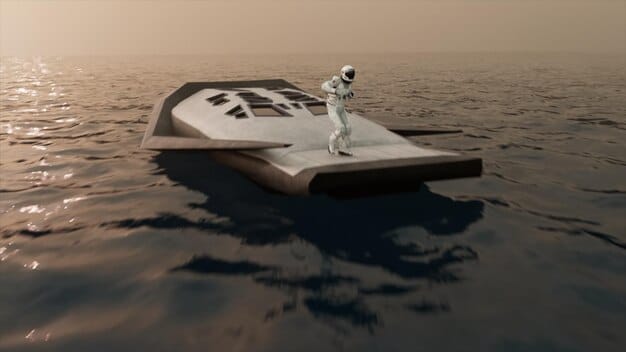
Revolutionizing Naval Warfare Through Innovation
The drive for technological supremacy is fundamentally about revolutionizing naval warfare. This involves not only new hardware but also new operational concepts that fully exploit these capabilities. For example, the integration of advanced data analytics and artificial intelligence can transform how information is processed, leading to faster and more accurate threat assessments and targeting solutions. It moves beyond human limitations in raw data assimilation.
- Autonomous Systems: Developing and deploying a range of unmanned aerial, surface, and undersea vehicles to expand reconnaissance, targeting, and strike capabilities, while increasing force projection with reduced human risk.
- Advanced Networking and AI: Implementing secure, resilient, and high-bandwidth communication networks coupled with AI-driven decision-support tools to enhance situational awareness, accelerate targeting cycles, and enable rapid adaptation to dynamic threats.
- Directed Energy and Hypersonics: Investing in game-changing weapons systems such as high-energy lasers for defense and offense, and hypersonic missiles that can strike targets at unprecedented speeds, challenging existing defensive capabilities.
Cyber security and resilient communication networks are also paramount. As naval systems become more interconnected, they also become more vulnerable to cyber attacks. The strategy includes robust measures to protect critical infrastructure, maintain secure communications, and develop offensive cyber capabilities to disrupt adversary operations. This digital battleground is as crucial as the physical one.
Ultimately, technological supremacy is not an end in itself but a means to an end: to deter aggression, maintain a free and open Indo-Pacific, and ensure that the U.S. Navy retains its decisive edge in any potential conflict. It’s about combining cutting-edge science with tactical brilliance, fostering a culture of innovation, and ensuring that naval forces are equipped with the best possible tools to confront the challenges of the future. This ongoing investment reflects a commitment to remaining at the forefront of naval power.
Strengthening Alliances and Partnerships
A linchpin of the U.S. military’s updated naval strategy in the Pacific is the profound emphasis on strengthening alliances and fostering new partnerships. Recognizing that no single nation can effectively address the multifaceted challenges of such a vast and complex region alone, the strategy prioritizes collective security and shared prosperity. This cooperative approach extends beyond traditional military cooperation to include broader diplomatic, economic, and humanitarian initiatives, creating a robust network of like-minded nations committed to regional stability.
The U.S. views existing treaty alliances—such as those with Japan, South Korea, Australia, the Philippines, and Thailand—as ironclad and foundational. The updated strategy seeks to deepen these relationships by enhancing interoperability, conducting more complex joint exercises, and sharing critical intelligence. These alliances are not static; they are dynamic partnerships that evolve in response to emerging threats and opportunities, forming the bedrock of regional security architecture.
Building new partnerships and deepening engagement with emerging regional powers is also a key objective. This involves expanding security dialogues, providing training and assistance, and participating in multilateral forums that promote transparency and mutual understanding. The ultimate goal is to create a more resilient and interconnected network of partners capable of addressing common challenges, from disaster relief to maritime security. These partnerships are crucial for burden-sharing and collective action.
Enhancing Interoperability and Multinational Exercises
Interoperability, the ability of different military forces to operate together effectively, is a critical component of strengthening alliances. The updated strategy invests heavily in joint training programs, common communication protocols, and standardized equipment where possible. This ensures that in times of crisis, allied navies can seamlessly integrate their operations, maximizing their combined effectiveness. Multinational exercises are particularly vital in this regard.
- Expanded Joint Training: Increasing the frequency and complexity of bilateral and multilateral training exercises to hone combined tactics, techniques, and procedures, fostering stronger relationships at all levels.
- Information Sharing Agreements: Establishing more robust frameworks for intelligence sharing and real-time situational awareness, ensuring that all partners have the necessary information to make informed decisions.
- Capacity Building: Providing assistance and training to partner nations to enhance their own maritime capabilities, contributing to a stronger and more capable regional security framework.
The focus on alliances and partnerships is not solely military. It extends to collective efforts in humanitarian assistance and disaster relief (HADR), maritime law enforcement, and environmental protection. By working together on these common challenges, the U.S. and its partners demonstrate their commitment to the welfare and security of the entire region. This “soft power” approach builds trust and goodwill, complementing hard military power.
The intricate web of alliances and partnerships underpins the U.S. military’s strategy of integrated deterrence. By presenting a united front, comprised of nations with shared values and interests, the collective deterrent message is amplified. These relationships are the ultimate force multiplier, ensuring that the burden of maintaining peace and stability in the Pacific is shared, and that any potential aggressor faces a unified and determined response. The future of Pacific security is undeniably collaborative.
Adaptation to Emerging Threats: Cyber and Space Domains
The U.S. military’s updated naval strategy in the Pacific unequivocally recognizes that modern warfare transcends traditional land, sea, and air domains. The increasing sophistication and proliferation of cyber and space-based threats necessitate a profound adaptation in how naval forces prepare, operate, and defend themselves. These emerging domains are not merely supporting elements but are foundational to achieving and maintaining dominance in a contested environment. The ability to operate effectively in these realms is critical for mission success.
Cyber warfare, in particular, presents a pervasive and insidious threat. Adversaries can seek to disrupt communication networks, compromise sensor data, or even disable critical ship systems remotely. The strategy emphasizes building resilient and redundant networks, developing advanced cyber defenses, and training personnel to operate in degraded or denied environments. Offensive cyber capabilities are also being honed to disrupt and degrade adversary operations, ensuring that the U.S. Navy can project power in the digital space as effectively as in the physical one.
Space is equally vital, serving as the ultimate high ground for reconnaissance, communication, navigation, and missile warning. Disruptions to satellite networks could severely impact naval operations, from GPS navigation to secure satellite communications. The updated strategy includes investments in resilient space architectures, anti-satellite capabilities for deterrence, and comprehensive training for sailors and marines on the critical role of space assets in maritime warfare. Protecting these orbital lifelines is paramount.
Operating in a Contested Information Environment
The modern operational environment is characterized by a contested information space, where narratives can be weaponized and misinformation can sow confusion. The updated strategy includes robust information warfare capabilities designed to counter adversary propaganda, protect friendly communications from exploitation, and maintain an accurate and transparent flow of information. It’s about shaping perceptions and ensuring that the truth prevails, which can be as impactful as kinetic operations.
- Cyber Offensive and Defensive Capabilities: Enhancing the ability to conduct sophisticated cyber attacks against adversary networks while simultaneously strengthening defenses against complex and evolving cyber threats targeting naval systems.
- Space Domain Awareness: Investing in advanced sensors and analytics to monitor activities in space, detect potential threats to U.S. and allied satellites, and ensure freedom of action in orbit.
- Information Warfare Resilience: Developing strategies and technologies to counter disinformation campaigns, protect operational security, and ensure the integrity of critical information flows during all phases of competition and conflict.
Training and education are fundamental to adapting to these emerging threats. Naval personnel at all levels must be proficient in cyber hygiene, understand the vulnerabilities of networked systems, and be capable of operating effectively even when communications are degraded. Simulated environments are being used to replicate realistic cyber and space attack scenarios, allowing forces to practice their responses in a safe but challenging setting, building resilience and tactical proficiency.
Ultimately, the adaptation to cyber and space domains reflects a broader understanding of 21st-century warfare. The updated strategy treats these domains as integral components of all naval operations, recognizing that control of the digital and orbital realms is increasingly synonymous with control of the physical battlefield. This holistic approach ensures that the U.S. Navy is prepared to deter aggression and defend its interests across the full spectrum of modern conflict, making it a truly multi-domain force.
Logistics and Sustainment in a Contested Pacific
The ambition of any military strategy in a vast, dynamic region like the Pacific hinges critically on effective logistics and sustainment. The U.S. military’s updated naval strategy places a newfound emphasis on revolutionizing how forces are supplied, maintained, and repaired in a potentially contested environment. Traditional logistics models, designed for less challenging scenarios, are being re-evaluated and adapted to ensure that naval operations can be sustained over extended periods and across immense distances, even under hostile conditions.
A key aspect of this re-evaluation is the concept of “expeditionary advanced base operations” (EABO), where small, agile units are deployed to strategically located islands or remote coastal areas. These mobile bases can provide critical rearming, refueling, and resupply points, extending the reach and endurance of naval forces. This distributed logistics approach reduces reliance on a few large, potentially vulnerable bases and enhances the overall resilience of the supply chain. It provides inherent flexibility and reduces the concentration of high-value assets.
Furthermore, the strategy emphasizes the development of more robust and secure maritime logistics capabilities. This includes investing in new classes of combat logistics force ships that can operate closer to the fighting, as well as exploring autonomous resupply vessels and aerial delivery systems. Redundancy and varied modes of delivery are essential to mitigate risks posed by adversary interdiction efforts, ensuring a continuous flow of vital supplies to forward-deployed units.
Enhancing Maintenance and Repair Capabilities Aligned with Modern Fleets
Sustainment is not merely about supply; it’s also about maintaining the readiness of complex modern naval platforms. The updated strategy includes initiatives to enhance expeditionary maintenance and repair capabilities, allowing forces to conduct more extensive repairs in theater rather than relying solely on distant shore-based facilities. This “fix forward” approach reduces downtime, increases operational availability, and maintains a higher combat tempo.
- Forward-Deployed Repair Facilities: Establishing mobile and modular repair teams and facilities that can operate from diverse locations, including expeditionary bases and allied ports, to quickly return damaged vessels and aircraft to operational status.
- Additive Manufacturing (3D Printing): Leveraging advanced manufacturing technologies to produce critical spare parts on demand closer to the point of need, reducing reliance on lengthy supply chains and traditional manufacturing pipelines.
- Logistics Resilience and Redundancy: Implementing redundant supply routes, diversifying transportation methods, and pre-positioning critical equipment and supplies to ensure continuous support even under contested conditions.
The human element of logistics is also receiving increased attention. This involves training personnel to be more adaptive, resourceful, and capable of operating in austere environments. The emphasis is on multi-skilled technicians who can address a broader range of maintenance issues, reducing the need for specialized external support. This decentralized approach empowers forward-deployed units to be more self-sufficient.
Ultimately, the updated approach to logistics and sustainment in the Pacific recognizes that the best military platforms are only as effective as their ability to be supported over time. By building a more distributed, resilient, and adaptive logistics network, the U.S. Navy aims to ensure its forces can operate continuously and effectively across the vastness of the Pacific, projecting power and maintaining a credible deterrent posture, even when faced with sophisticated challenges. It’s an often-overlooked but utterly critical component of strategic success, underpinning all operational capabilities.
The Human Element: Training, Recruitment, and Retention
Crucial to the success of the U.S. military’s updated naval strategy in the Pacific is the unwavering focus on its most vital asset: its people. Technology, platforms, and strategic concepts are all rendered inert without the highly skilled, motivated, and resilient individuals who operate them. The strategy places significant emphasis on refining training methodologies, adapting recruitment strategies to attract top talent, and implementing robust retention programs to keep experienced personnel within the ranks. This human element is the ultimate force multiplier.
Modern naval warfare demands a diverse array of skills, from operating highly complex networked systems to mastering the nuances of distributed maritime operations. Training programs are therefore being re-evaluated to be more rigorous, realistic, and adaptable to real-world scenarios, particularly those anticipated in the Pacific theater. This includes increased emphasis on joint and multinational exercises, simulating high-end combat operations, and integrating cyber and information warfare training into all drills.
Recruitment faces new challenges in a competitive labor market. The strategy includes innovative approaches to attract individuals with critical skills, particularly in areas like cyber security, data science, engineering, and artificial intelligence. This means reaching out to diverse talent pools, showcasing the unique opportunities and impact of naval service, and demonstrating a commitment to professional development and career progression. The Navy understands that it must compete for the best and brightest.
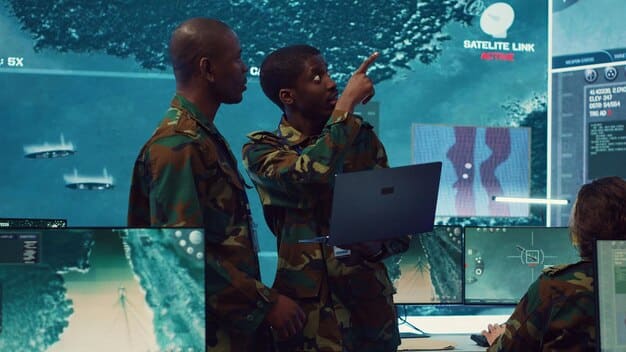
Cultivating a Culture of Innovation and Adaptability
Beyond technical skills, the updated strategy seeks to cultivate a culture of innovation and adaptability throughout the naval force. This involves empowering junior leaders, encouraging experimentation, and fostering an environment where ideas can flow freely up and down the chain of command. The complex and rapidly evolving nature of the Pacific operating environment demands personnel who can think critically, solve problems creatively, and adapt quickly to unforeseen circumstances.
- Advanced Simulation and Virtual Reality Training: Utilizing cutting-edge simulation technologies to provide realistic training experiences that replicate complex operational environments without incurring the costs and risks of live exercises.
- Talent Management and Specialized Recruitment: Implementing targeted recruitment initiatives to attract individuals with highly sought-after skills in emerging technologies, coupled with flexible talent management programs to retain them.
- Leadership Development and Continuous Learning: Fostering a culture of lifelong learning and continuous professional development, ensuring that naval personnel are always abreast of the latest technological and strategic advancements.
Retention is just as critical as recruitment. The loss of experienced personnel represents a significant drain on capabilities and institutional knowledge. The strategy includes comprehensive programs designed to enhance the quality of life for sailors and their families, provide clear career progression paths, and offer competitive incentives. Recognizing the immense dedication required of naval service, fostering a supportive environment that values and rewards commitment is paramount.
The human element is the ultimate competitive advantage. The U.S. military’s updated naval strategy in the Pacific acknowledges that investing in its people – through comprehensive training, strategic recruitment, and robust retention efforts – is not merely a personnel function but a strategic imperative. A highly trained, motivated, and resilient force is capable of overcoming any challenge, no matter how technologically advanced or strategically complex, ensuring the effective implementation of the Navy’s vision for regional security.
| Key Aspect | Brief Description |
|---|---|
| 🌐 Integrated Deterrence | Combines military, diplomatic, economic, and informational tools to dissuade aggression across all domains. |
| ⚙️ Technological Supremacy | Focuses on advanced innovations like AI, autonomous systems, and hypersonics for decisive combat advantage. |
| 🤝 Strengthened Alliances | Deepens partnerships through enhanced interoperability, joint exercises, and collective security efforts. |
| 👤 Human Capital Investment | Prioritizes recruitment, advanced training, and retention to ensure a highly skilled and adaptive naval force. |
Frequently Asked Questions about US Naval Strategy in the Pacific
The primary goal is to maintain a free and open Indo-Pacific region, ensuring regional stability, deterring aggression from any potential adversaries, and safeguarding vital international sea lanes. This is achieved through a combination of enhanced military capabilities, strengthened alliances, and adaptive responses to evolving threats across all domains, including cyber and space.
Integrated deterrence moves beyond purely military strength by incorporating diplomatic, economic, informational, and military tools in a unified approach. It aims to present a credible, multi-faceted response to aggression, making any hostile action costly and unsustainable for adversaries across multiple avenues, not just through direct military conflict.
Alliances and partnerships are absolutely central. The strategy views them as force multipliers, enhancing collective security through shared training, interoperability, and intelligence exchange. Deepening these relationships ensures a united front, shares the burden of regional stability, and amplifies the deterrent message to potential aggressors.
The strategy places strong emphasis on disruptive technologies such as artificial intelligence, autonomous unmanned systems (aerial, surface, and undersea), advanced networking (JADC2), directed energy weapons, and hypersonics. These innovations are critical for maintaining a decisive technological edge and enabling new operational concepts in modern naval warfare.
The strategy recognizes cyber and space as crucial domains. It prioritizes building resilient networks, developing sophisticated cyber defenses and offensive capabilities, and securing space assets vital for communication and navigation. Training for operations in contested information environments is also key, ensuring readiness across all aspects of modern conflict.
The Enduring Commitment to Pacific Security
The U.S. military’s updated naval strategy for the Pacific is not merely a tactical adjustment but a profound declaration of enduring commitment to the region’s stability, security, and prosperity. It acknowledges the complexity of the 21st-century geopolitical landscape, where traditional power projection must be augmented by integrated deterrence, technological superiority, robust alliances, and a human element trained for the challenges of a multi-domain battlespace. As the Pacific continues to evolve as a global economic and strategic powerhouse, this comprehensive and adaptive naval framework aims to ensure open waterways, foster peaceful coexistence, and respond decisively to any threats that may emerge, safeguarding a future where all nations in the region can thrive.



